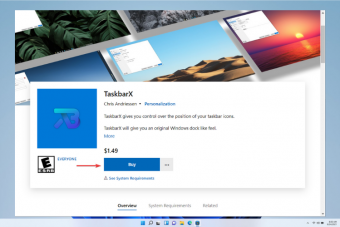

Replying to user complaints on the Windows Insider website, Microsoft says, "Currently, dragging a file onto an app in the taskbar to open it in that app is not supported in Windows 11, but we appreciate all your feedback, and we’ll continue to use it to help guide the future of features like this. Some people were hopeful this was just a bug, but unfortunately, it's an intended aspect of Windows 11. Additionally, dragging a file onto an app on the Taskbar no longer opens the file in that app. For some reason, that's not supported in Windows 11.

Windows Registry editor app stores all the low-level Windows settings. Make a Clear Taskbar From Registry Editor App. Just like the previous method, changes will become effective instantly. Slide the radio button to the right to enable the Transparency effects option. In Windows 10 and earlier versions, users could drag an app on the Taskbar and have it pinned as a new shortcut. Select Visual effects on the right-side menu. As reported by Windows Latest, Windows 11 removes the ability to drag-and-drop files or app shortcuts onto the Taskbar. In addition to the visual tweaks, people testing the Windows 11 preview builds have also noticed changes in its functionality. Related: Windows 11 First Insider Preview Now Available It's placed in the bottom-middle of the screen by default, all of the app icons are centered, and it looks a lot like taskbars found in macOS and Chrome OS. While the Taskbar still exists in Windows 11, it looks a lot different than usual. It sits on the bottom-left of the screen, everything is aligned to the left edge, and it houses both the Start Menu and app shortcuts.

The Taskbar as its known today has existed since Windows 95. Among all of those changes, something that's created the most commotion is the new Taskbar.


 0 kommentar(er)
0 kommentar(er)
